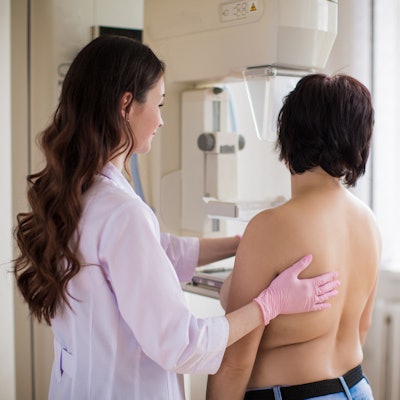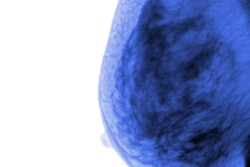
In many European countries, radiologists double read mammograms, followed by a consensus review when the recommendations don't align. Double reading could also benefit U.S. radiologists, according to a study published online on 11 February in Radiology.
The study authors, led by Dr. Nuala Healy from Cambridge University Hospitals in the U.K., found that consensus review helped reduce recall rates without affecting cancer detection. The results demonstrate that regular informal meetings may help improve screening accuracy in the U.S., noted Solveig Hofvind, PhD, and Dr. Christoph Lee in an accompanying editorial letter.
"In the United States, where there is still a single-reader paradigm, more sets of eyes would likely benefit patients and would prevent harms from false-positive screenings," wrote Hofvind, head of Norway's breast cancer screening program, and Lee, a professor of radiology at the University of Washington School of Medicine.
Previous research has shown that double reading can increase cancer detection, but it may also lead to higher recall rates. Healy and colleagues wondered whether a consensus or arbitration interpretation by independent readers of full-field digital mammograms could maintain high cancer detection rates while also reducing recalls.
In the study, two radiologists independently read mammograms from women who participated in Ireland's biennial screening program from 2010 to 2014. The radiologists assigned each mammogram an "R" category similar to BI-RADS, where R1 and R2 represented normal findings, and R3 to R5 represented cases to refer for further evaluation.
If the two radiologists disagreed on whether to refer a patient, the case went to a consensus review. During this biweekly meeting, a cohort of three to five radiologists, some of whom may have already read the mammograms, reviewed the discordant screening results.
Out of the 187,333 screenings at a center in Dublin, 1.3% had discordant results that were reviewed by a team of radiologists. The reviewing radiologists ultimately referred 40% of patients for further assessment, while the remaining 60% were returned to the typical preventive screening program. Microcalcifications were the most common abnormalities for a referral after consensus review, accounting for 11.3% of review cases.
A total of 108 cancers were detected among all patients. Women referred from the consensus review accounted for 13.5% of patients who presented for further assessment and 9.4% of all cancers diagnosed.
"This five-year review of discordant imaging findings discussed at consensus supports the value of consensus reading of discordant mammograms following the introduction of full-field digital mammography," the authors wrote. "It demonstrates persistently high sensitivity and specificity rates when compared with a single review of screen-film mammography."
The researchers noted the data were only from one center in Ireland and included poor documentation of interval cancers. However, the results still support the benefits of consensus review over single readings, according to Hofvind and Lee.
"Studies like that of Healy et al should encourage us to question the single-reader paradigm," Hofvind and Lee wrote. "We need to think of new and innovative ways to get multiple sets of eyes looking at screening mammograms. In the future, those extra sets of eyes may not necessarily need to be human."



















